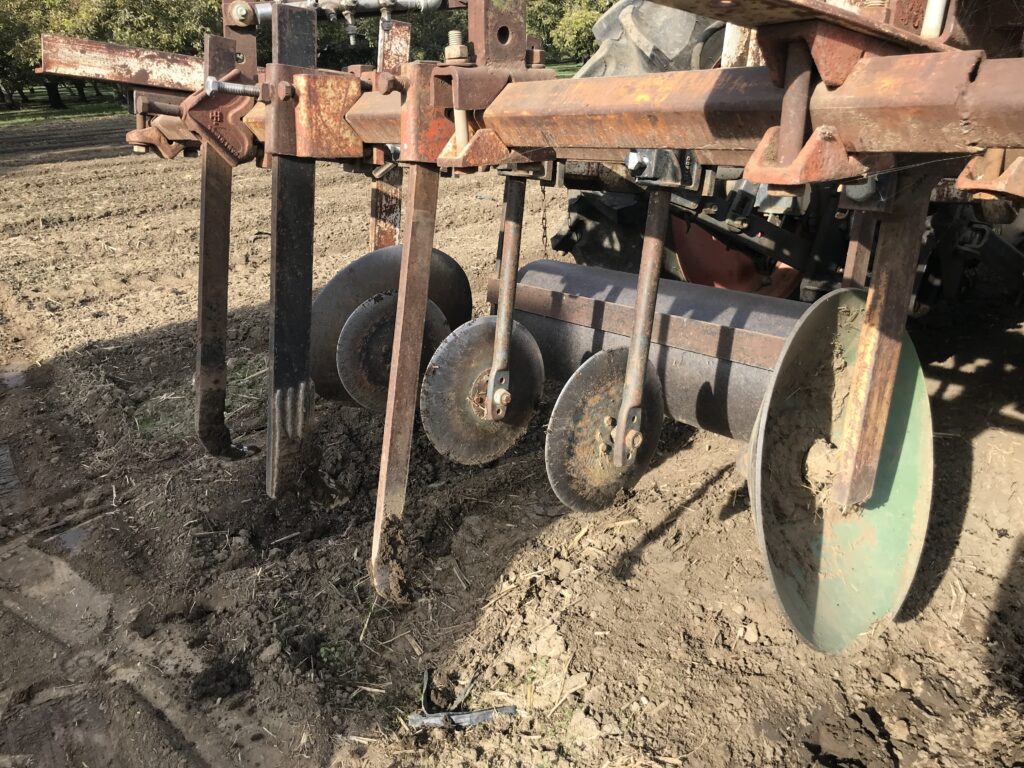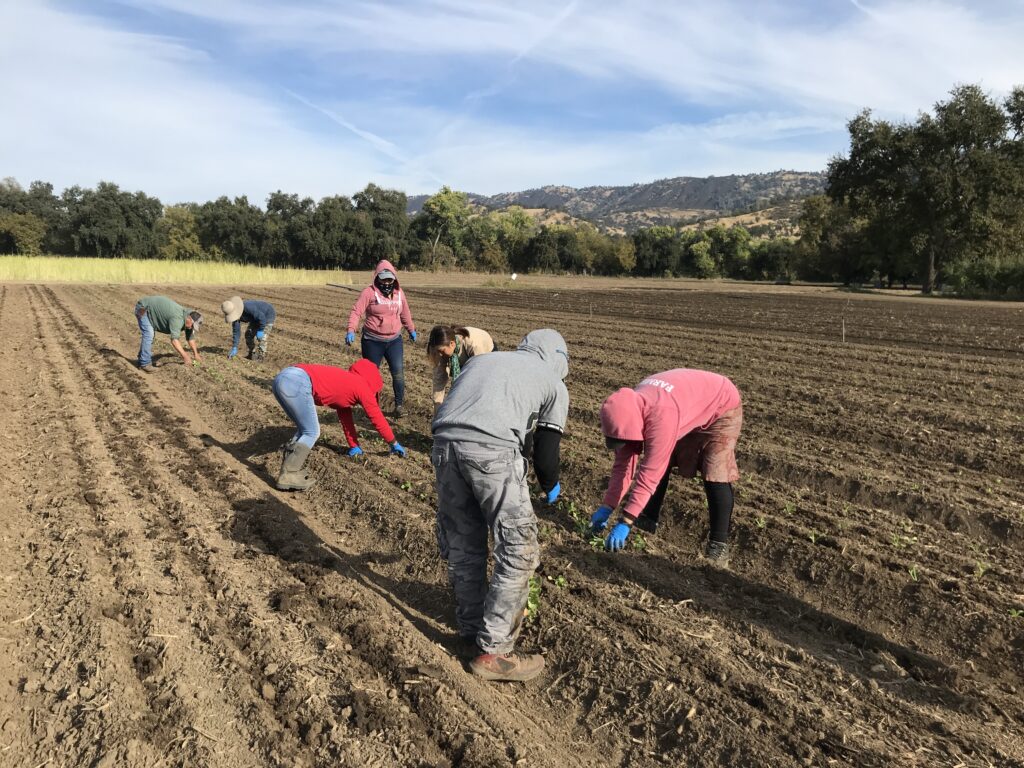
April showers bring May flowers, but when do you plant those flowers? It varies between years but Full Belly Farm, spring flowers went in the ground on Tuesday and Thursday of last week.
Dru and Jan direct seeded 20 beds of flowers on Tuesday and Jan, the flower team, and Alfredo and his crew transplanted 24 beds of flowers on Thursday. Direct seeded flowers included larkspur, nigella, calendula, bells of Ireland, scabiosa and the transplants included snapdragons, godetia, delphinium, feverfew, Sweet William. Plus lots more!
Each bed is 500 feet long and has three rows. Transplants are spaced about a foot apart and the seeds are planted about one and a half to two inches apart. That’s roughly 36,000 transplants and 220,000 seeds, though not all seeds will germinate and perhaps not all transplants will survive. Either way, it’s A LOT of work to get all of these seeds and transplants in the ground and it’ll be A LOT of flowers to harvest in spring.
Here’s a quick video of the process:
Some things to note:
- Like our vegetable transplants, we grow most of our spring transplants in our greenhouse but we rely on a commercial greenhouse operation (Headstart) for these fall transplants.
- We use a Monomosem precision planter for our seeds, allowing us to get the exact spacing that we want. All transplants are planted by hand but we still use the planter. Jan removed the part that inserts the seeds but left the parts that make the furrows to put the transplants in.

- Notice how the soil looks completely dry on top of the beds but after the planter creates the furrow, the soil is moist just a few inches below the surface!
- Ok, not all were planted by hand. For the FIRST TIME in Full Belly Farm history, we used the mechanical transplanter for flowers with some snapdragons. We’re going to wait and see how they do before deciding if it’s worth doing again.
This is a lot of flowers, but we’re not done. We still have to plant the spring bulbs, corms, and tubers (iris, ranunculus, anemones, and tulips), which will happen at some point before our winter break. Once we return, there will be much more planting next spring for our summer flowers.
Elaine Swiedler, CSA Manager

